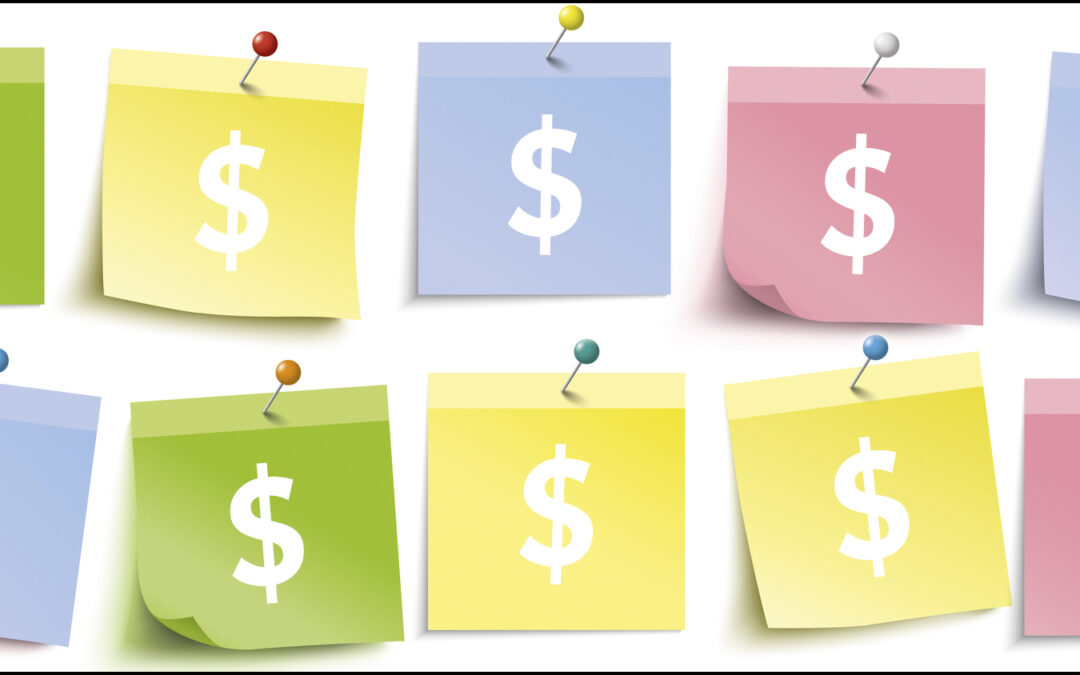
by Greg Caruso | Jun 24, 2025 | ESOP Business Valuation
AI can be a powerful co-pilot in navigating risk and boosting efficiency by processing vast amounts of data, identifying patterns, and automating tasks that would otherwise be time-consuming or prone to human error. But humans must review and refine the results. From time to time, AI does make mistakes, just like any other tool or person.
The key is to view AI not as a replacement, but as an intelligent assistant that amplifies your capabilities.
Let’s break down how AI can help you with both risk navigation and efficiency.
Using AI to Understand Your Company and Market Risks
AI offers a powerful solution by enabling dynamic risk assessment. This should be integrated into your planning and forecasting process. Here’s how it works:
- Continuous Data Ingestion: AI algorithms can constantly ingest and process vast amounts of real-time data, including:
- Financial Market Data: Interest rates, bond yields, equity market indices, volatility indices.
- Economic Indicators: Inflation rates, GDP growth, unemployment figures, consumer confidence.
- Industry-Specific Data: Commodity prices, regulatory changes, technological disruptions.
- Company-Specific Data: Stock prices (for public companies), credit ratings, news sentiment, social media activity.
- Intelligent Pattern Recognition: Machine learning algorithms can identify subtle patterns and correlations within this data that human analysts might miss. This enables a more nuanced understanding of how various factors impact risk.
Using AI to Increase Efficiency
AI also excels at automation, optimization, and personalization, freeing up your time and mental energy.
- AI-powered search engines and tools can quickly find, filter, and summarize vast amounts of information from the web or your documents. Instead of sifting through articles, you can get the key takeaways in seconds
- AI writing assistants can help you draft emails, reports, marketing copy, and even creative content much faster. They can also proofread, correct grammar, improve clarity, and adjust tone.
- AI-powered scheduling assistants can find optimal meeting times, send invites, and set reminders without manual effort
- AI tools can transcribe meeting audio in real-time and even summarize key discussion points and action items, saving note-taking time.
- AI can act as a brainstorming partner, generating ideas, concepts, or solutions based on your prompts.
The Human Element Remains Crucial
While AI offers immense potential in dynamic risk assessment and efficiency, it’s crucial to remember that human expertise remains vital. AI provides the powerful analytical engine, but valuation professionals bring the critical thinking, industry knowledge, and qualitative judgment necessary to interpret the results and ensure the model’s assumptions are sound.
By strategically integrating AI tools into your daily routines and decision-making processes, you can significantly enhance your ability to anticipate and mitigate risks while simultaneously achieving unprecedented levels of efficiency in both your personal and professional life.
The key is to view AI not as a replacement, but as an intelligent assistant that amplifies your capabilities.

by Greg Caruso | Aug 12, 2024 | Exit Planning Business Valuation & Growing Business Value
Review processes with your staff.
Often, they know of things that are duplicative or no longer necessary.
Remember that software upgrade that improved efficiency?
Did you really rework your process to take advantage of the efficiency. Perhaps you no longer need that routine sign-off or other changes. Check all of these areas.
Check if you really need all your software subscriptions.
Those things just don’t let go and the costs can add up across staff.
Negotiate anything worth the time.
Obtain three bids. While usually this seems like extra work it often can reduce costs signficinatly. We once reduced insurance costs 50% which was a very material number.
Look at your management structure.
Do you have a layer or layers that really are not necessary? Can these people do some production or sales along with management?
Training.
While training in the short term is an expense in the long term it allows your staff to be more efficent and do higher level things. For many companies well trained staff is the key to efficent growth. Do you have a plan for each person? How are you training and advancing your people?
Capital Costs.
There is a reason CNC machines replaced saws and drills. You do not want to overinvest, but at some point equipment needs to be added or updated to be competative. If you have a lot of equipment, you should have a replacement schedule as a guide that highlights when to review each piece and what is needed in the future for your budgets.
Develop a planning process.
These things should be part of a planning process that includes KPI’s, projections, training and capital investments, and is monitored at least monthly at each level of the company.

by Greg Caruso | Jun 17, 2024 | Exit Planning Business Valuation & Growing Business Value
At the highest level, business value is simple. The formula is:
Business value = Forecast Future Cash Flow / Risk
In business valuation risk is the likelihood of achieving the forecasted cash flow in the future.
Risks come from many angles and chip away at profitability and value.
Here are a few risks, but certainly not all risks:
Payment Risk – Many businesses extend large amounts of credit and don’t always monitor changes in client credit risk over time. Manage accounts receivable and be careful with credit.
Interest Rate Risk – Everyone remembers this one now!
Liquidity Risk – Cash is like blood to your body. Even a profitable business can run out of cash. Manage cash daily or weekly depending on your balances.
Market Risk – It has been a good economy, so long leaders are forgetting about what a recession is really like. If you are in a cyclical industry review plans for when the party stops and sales drop by 20%, 40% or whatever happens in your industry.
Regulatory Risk – This can be a wildcard for many businesses and often understated until a problem arises.
Supply Chain Risk and HR Risk – These both were under-appreciated until Covid. Do you have alternatives if your key people leave, or primary supplier has problems?
Emerging Risks – It’s your guess about what is next. Review and do your best to get it right.
Appropriate risks should be reviewed and systems implemented at each level of your organization. For instance, in construction, weekly safety talks are given by many companies. These are most successful when the conversation goes two ways. Often staff will understand their day-to-day problems and risks better than management.

by Greg Caruso | May 16, 2024 | Exit Planning Business Valuation & Growing Business Value
In the fast-paced world of business, productivity is queen and king. Overall, improving productivity is not just about doing more work; it’s about working smarter, achieving better results, and creating value for all stakeholders involved—employees, customers, shareholders, and society at large.
Just a few of the many places improved Productivity will show up.
Adaptability and Resilience: In times of economic uncertainty or market volatility, businesses with high productivity are better equipped to weather challenges and adapt to changing conditions. They can pivot quickly, reallocate resources, and seize new opportunities, maintaining stability and resilience in the face of adversity.
Employee Engagement: When employees feel that their work is meaningful and their contributions are valued, they are more engaged and motivated. Improving productivity can create a positive work environment where employees feel empowered, supported, and recognized for their efforts.
Cost Efficiency: (Of course!) Increased productivity allows businesses to achieve more with fewer resources, which can lead to cost savings. By optimizing processes and reducing waste, organizations can improve their bottom line and profitability.
Investing in Productivity: A Smart Move
Boosting company productivity isn’t just about working harder; it’s about working smarter. Here are some ways to achieve this:
- Proactive Planning to anticipate growth. Analyze your current capacity and identify potential bottlenecks. Invest in additional resources like equipment, personnel, or training programs in advance.
- Prioritization and Scaling by focusing on core tasks that directly impact sales and customer satisfaction. Consider outsourcing non-critical functions to free up internal resources.
- Invest in the right tools and technologies to streamline workflows and automate tasks.
- Prioritize employee well-being through flexible work arrangements and a positive company culture to reduce stress and burnout.
- Implement clear communication channels to ensure everyone is informed and aligned with goals.
- Track key performance indicators (KPIs) to identify areas for improvement and measure the impact of productivity initiatives on conversion rates.
A productive company is an efficient company. By focusing on employee well-being, streamlined processes, and clear communication, you can unlock the hidden multiplier of productivity and watch your company results and business value soar.

by Greg Caruso | Jan 18, 2024 | Exit Planning Business Valuation & Growing Business Value
Planning is a process that involves thinking ahead (hence playing chess) and organizing actions to achieve specific goals. Successfully done, it can allow management to see the future and act quickly on opportunities or threats growing the value of the business.
The first step in effective planning is defining clear and measurable goals. Having a precise understanding of what you want to accomplish provides a roadmap for the planning process. Goals should be SMART—Specific, Measurable, Achievable, Relevant, and Time-bound.
Once goals are established, the next step is to assess the current situation or starting point. Namely you must start where you are. This involves conducting a thorough analysis of resources, constraints, and potential challenges. Often a SWOT chart can be used to organize these. Strengths, Weaknesses, Opportunities, and Threats. Google “SWOT” if this is new to you.
By understanding the present circumstances, individuals or organizations can identify the steps required to bridge the gap between the current state and the desired future state. This analysis can encompass various aspects, such as financial resources, time constraints, personnel capabilities, and external factors that may impact the plan’s execution. It is important to think through, even roll play, strategies and alternative plans for both extraordinary success and major difficulties in achieving goals.
The final phase of planning involves developing a detailed action plan. This includes breaking down the overarching goal into smaller, manageable tasks or steps. Each task should have a specified responsible person, deadline, and resources.
Regular monitoring and reassessment are critical during the execution phase to ensure that the plan remains aligned with changing circumstances. Set a non-negotiable schedule to meet either weekly, bi-weekly or at the longest monthly to review progress. Flexibility is key, allowing for adjustments and adaptations as needed.
Successful planning is an iterative process that involves continuous evaluation, learning, and refinement to increase the likelihood of achieving the desired outcomes such as higher profits and higher business value.





